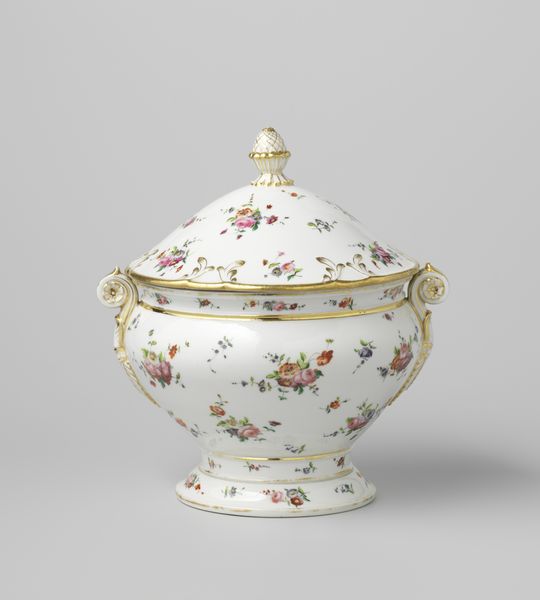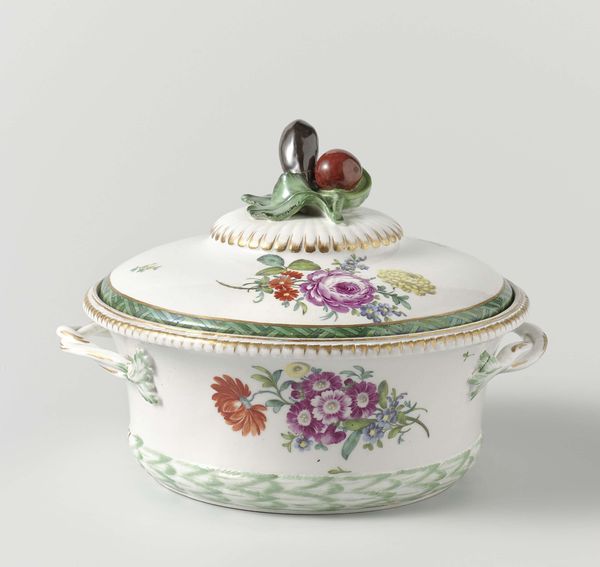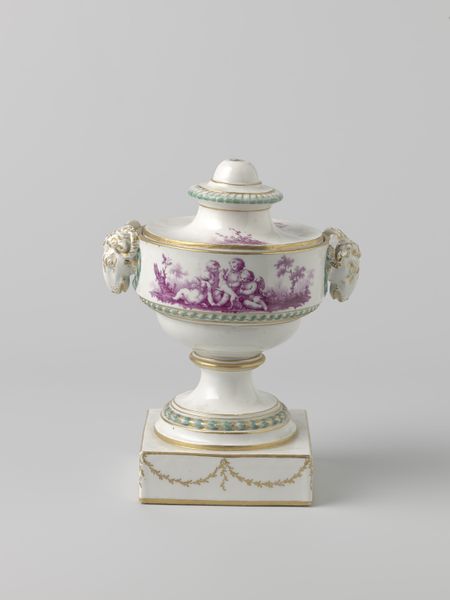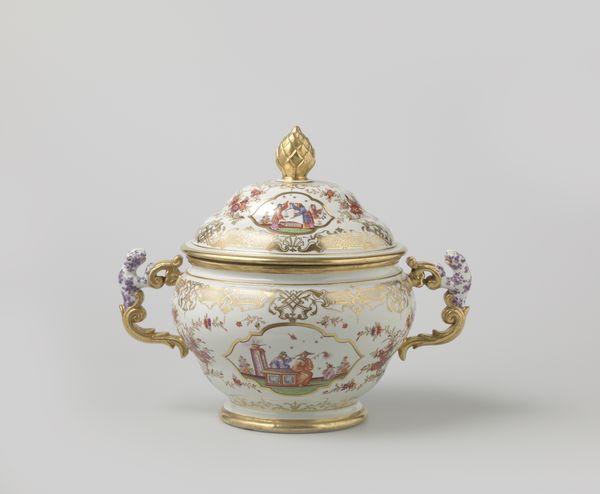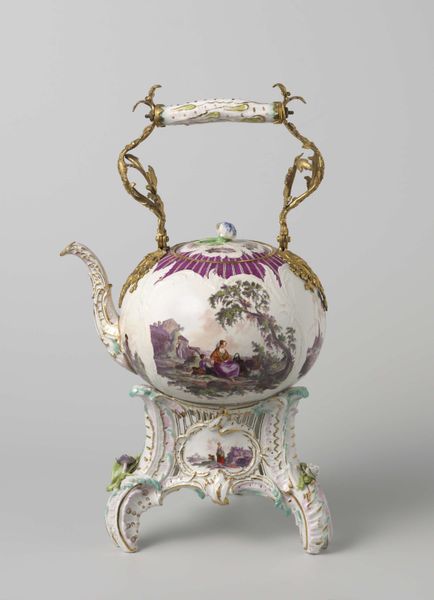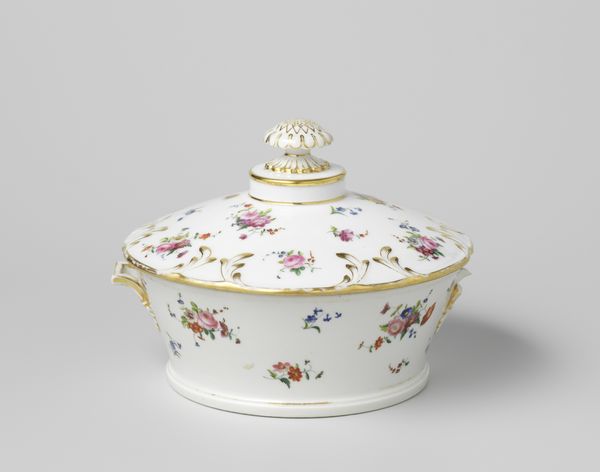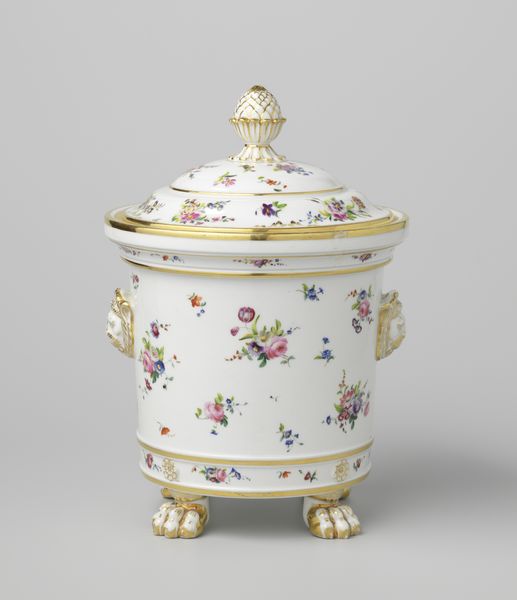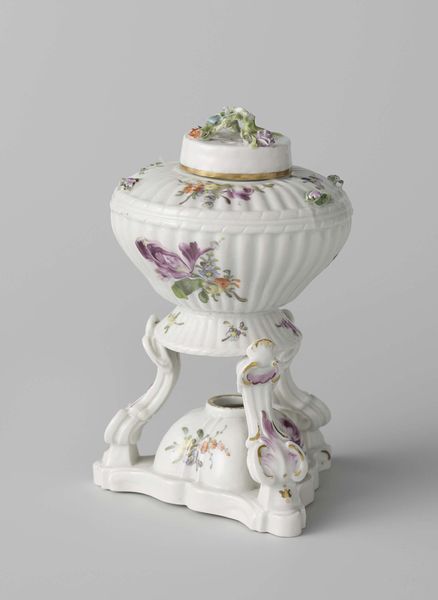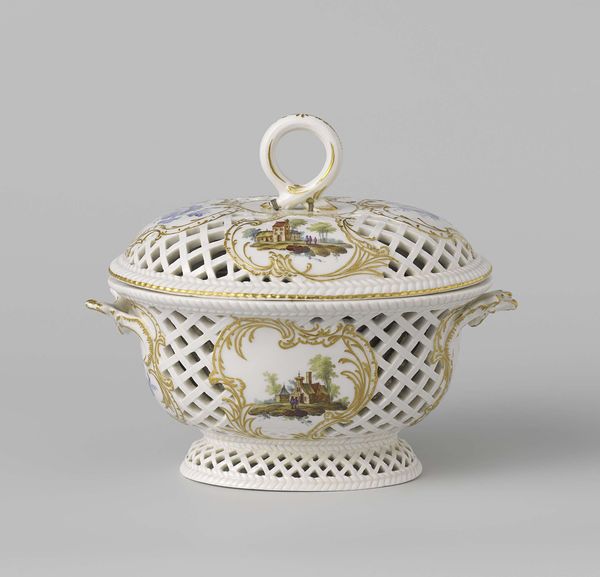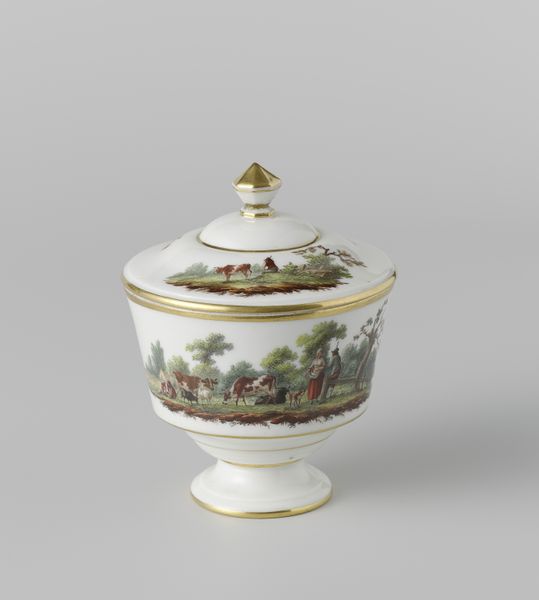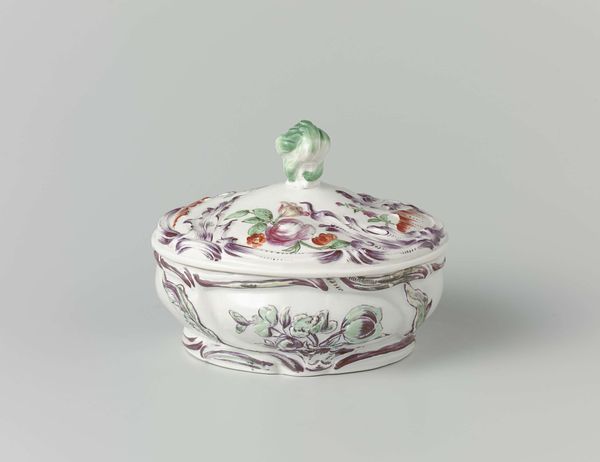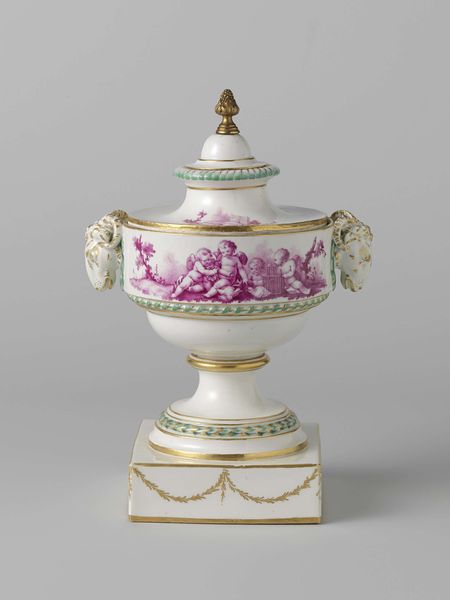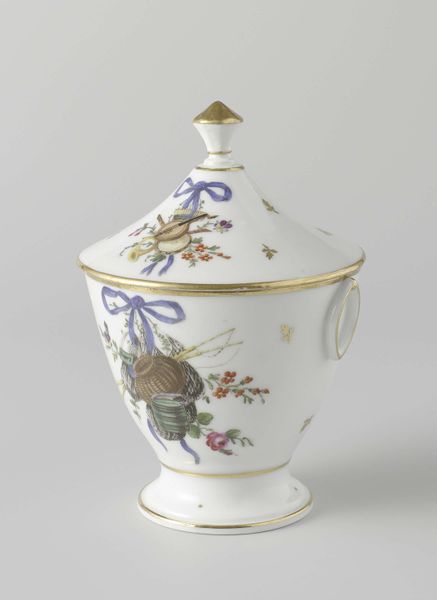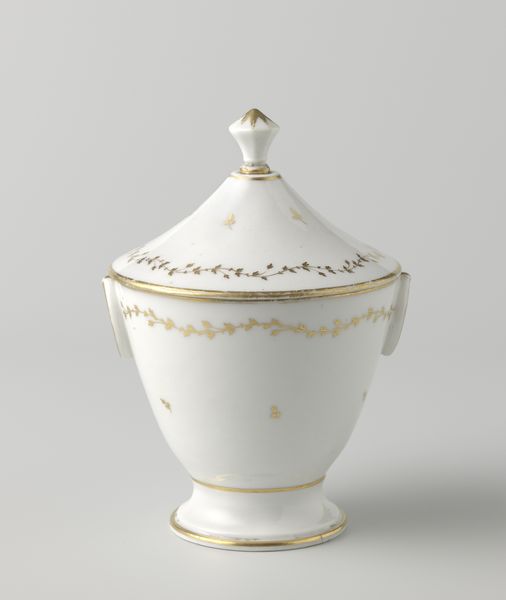
#
product studio photography
#
circular oval feature
#
egg art
#
3d printed part
#
product fashion photography
#
jewelry design
#
retro 'vintage design
#
food illustration
#
stoneware
#
ceramic
Copyright: Rijks Museum: Open Domain
Curator: Well, isn't this just precious? This is a pair of incense burners crafted circa 1777 to 1790 by the Porseleinfabriek Den Haag, currently residing here at the Rijksmuseum. Editor: Intricate! Almost unsettlingly so. It's like a Fabergé egg met a porcelain doll, then decided to have a very proper, very floral tea party. Curator: Exactly. We're seeing the high rococo aesthetic here in full swing. Note the meticulous details. The ribbed design and hand-painted sprigs. Consider the labor investment. How these forms become signifiers of luxury and trade. Editor: I do see that opulence you mention, sure, but my imagination runs wilder. It's easy to imagine secret rituals and smoky aromas wafting from these delicate objects. Who breathed in that scented smoke? Were they nobles, poets, lovers? Curator: It’s intriguing to think about consumption in that way. This wasn’t a mass-produced object; the process speaks to particular workshops and skills. Examining such porcelain objects help us chart social customs, the evolution of artisanal practices and global trade routes for commodities such as pigments. Editor: Which also makes it an artifact loaded with unspoken stories, like those hand-painted posies—so fragile! A silent language understood at the time. They practically demand to be filled with scented secrets and set on a voyage. Curator: Well, they were certainly made to delight the elite. The material choices – the specific kaolin clay used and firing process reflect specific technological capabilities. Even that ornate decoration you highlighted functions as status marker in eighteenth-century Dutch society. Editor: More than just a pretty face then, right? These incense burners embody social layers as much as artistic expression, almost as if holding both mundane habits and hidden aspirations at once. Curator: Precisely. Thinking about what was desired at the time – how that aesthetic desire was produced— and ultimately consumed connects material choices, craftsmanship and lived realities. Editor: A beautiful little container, whispering echoes of a fragrant, fancy world, a history etched into ceramic. Thanks for making me reconsider my first impression and look beyond their dainty aesthetic!
